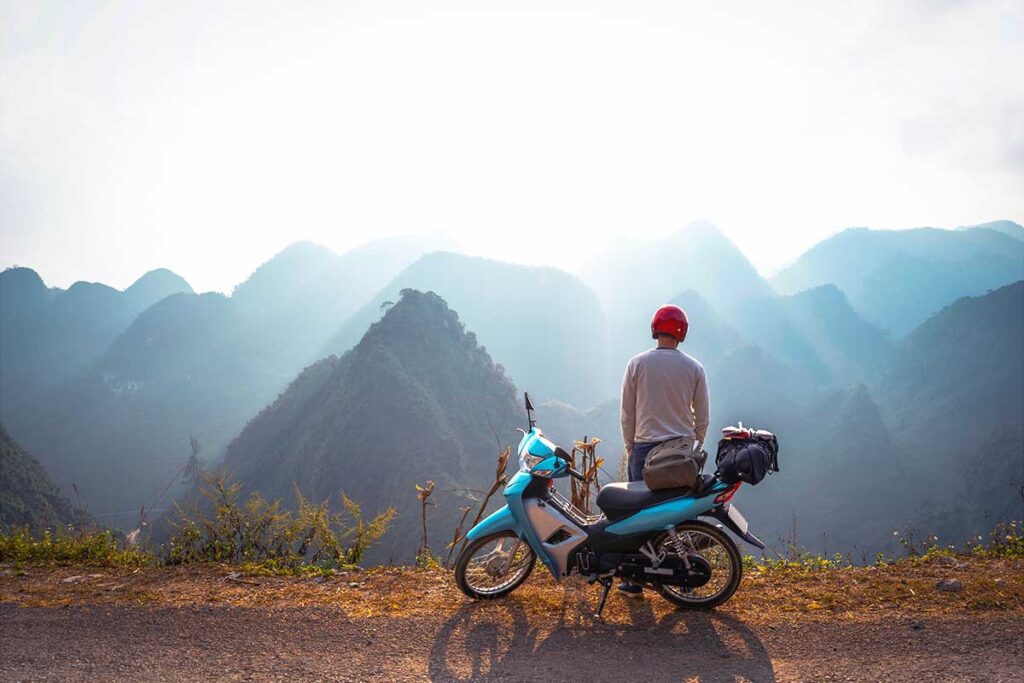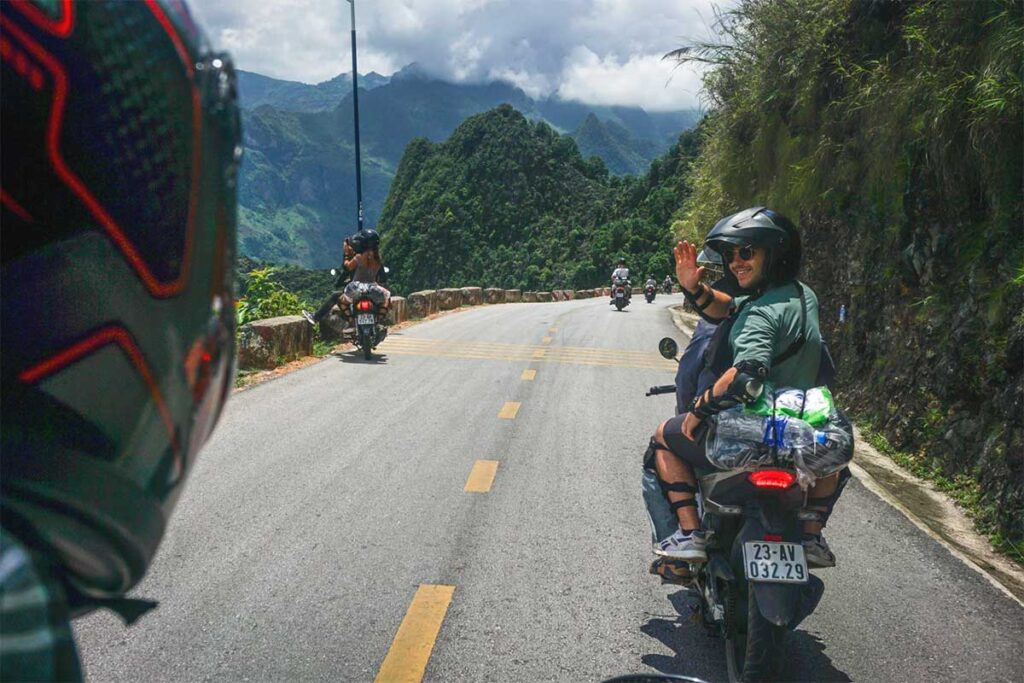What is the Ha Giang Loop?
Ha Giang is a mountainous province in northern Vietnam, famous for its rugged limestone peaks, dramatic mountain passes, deep valleys, and panoramic viewpoints. Alongside the stunning landscapes, you’ll find traditional ethnic minority villages, local markets, and rich cultural diversity.


To connect these natural and cultural highlights, a circular route was developed that starts and ends in Ha Giang City. This route is known as the Ha Giang Loop, and originally made to drive by motorbike — that is why it is often referred to as the Ha Giang motorbike loop.
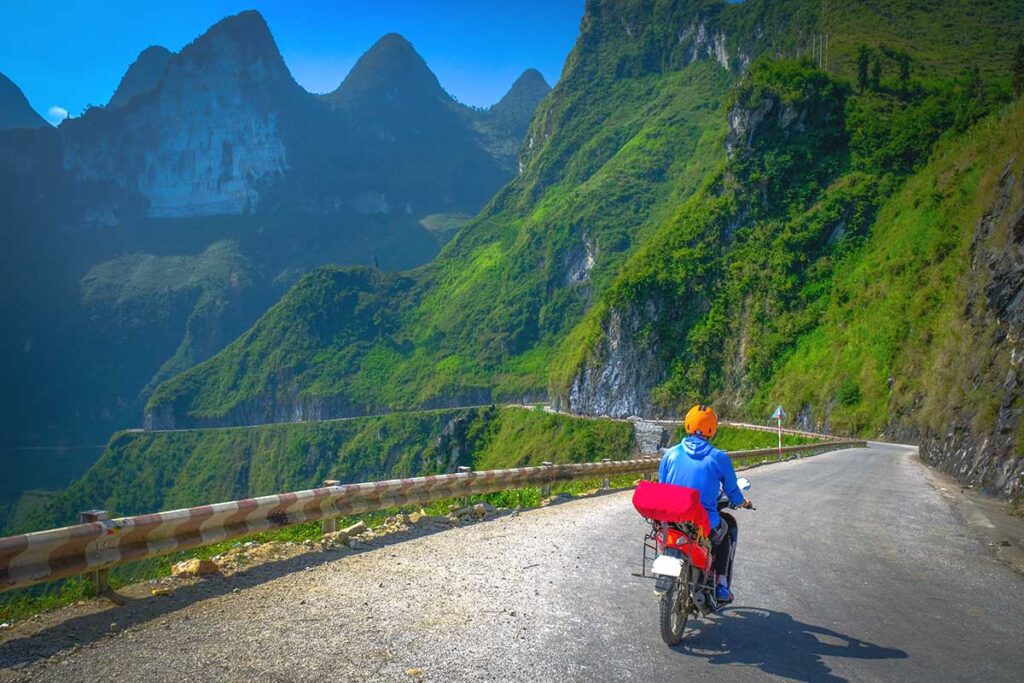
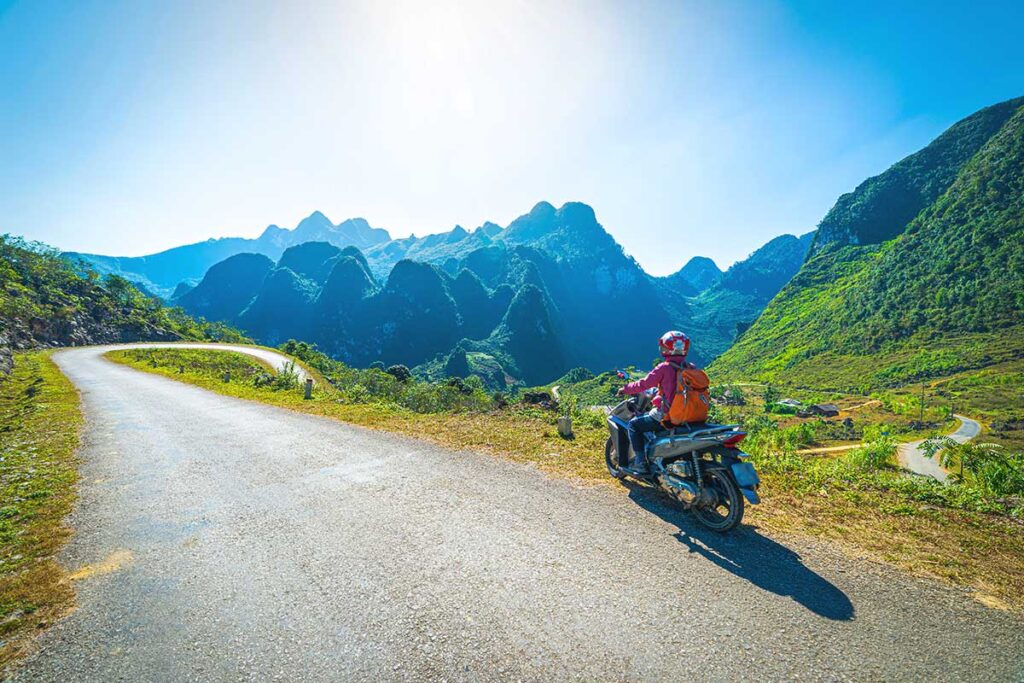
We’ve written a separate full guide to the Ha Giang Loop covering all major sights, accommodation tips, and how to get there. But this guide focuses only on doing the Ha Giang Loop by motorbike if you drive yourself. If you’re looking to explore the loop on the back of a motorbike with a local guide, check out our separate guide about Ha Giang Easy Rider tours.
The legal rules of driving motorbike in Ha Giang
If you plan to do the Ha Giang Loop by motorbike and drive yourself, it’s important to understand Vietnam’s driving laws. While rental shops rarely check licenses, you are legally required to have the proper documentation — and skipping this comes with real risks.
1. Motorbike license
Any motorbike above 50cc requires a proper motorbike license. In practice, almost all motorbikes in Vietnam are above 50cc, and anything below wouldn’t be suitable for the mountain roads of Ha Giang anyway.
A car license is not enough — you need a valid motorbike license from your home country to drive legally.
2. International Driving Permit (IDP)
In addition to your motorbike license, you must also carry an International Driving Permit (IDP) issued under the 1968 Vienna Convention. This is the only IDP Vietnam recognizes.
Many travelers unknowingly carry an IDP under the 1949 Geneva Convention, which is not valid in Vietnam. Some major countries that only issue the 1949 version include the United States, Australia, and the UK — which means that technically, citizens from these countries cannot drive legally in Vietnam even if they hold a motorbike license.
Alternative: Vietnamese licenses and conversions
Vietnamese motorbike licenses are of course valid. But as a tourist, you can no longer convert your home license to a Vietnamese one unless you have a Temporary Residence Card (TRC). This means most travelers do not have the option to get a legal Vietnamese license.
Driving the Ha Giang Loop without a licence
So what happens if you plan to do the Ha Giang Loop by motorbike without a valid licence? The short answer: it’s very common — but not without risks. Below is what you need to know about doing it “the unofficial way.”
The practice
Every day, hundreds of travelers — especially backpackers — drive the Ha Giang Loop without a motorbike license. It’s no secret: probably 99% of the self-driving riders on the loop have no valid license or insurance.
Most hostels, homestays, and rental shops don’t ask about licences at all. As long as you pay, they’ll hand you the keys.
Police along the loop
In most parts of Vietnam, the chances of being stopped by police while driving are very low. But Ha Giang is an exception.
Due to the rapid rise in tourism and frequent accidents, the local authorities now check drivers more often. There are known police checkpoints on the loop where random checks happen, especially during busy periods.
If you’re stopped and don’t have the proper licence or IDP, you’ll receive a fine — but you will still be allowed to continue driving. Just know that if you’re stopped again, you can be fined again.
Police fines
The fine for driving without a valid licence and IDP is currently 6 to 7 million VND (about 240–280 USD). It’s not a small amount, especially for budget travelers.
Getting around police stops
Some tour companies know exactly where the checkpoints are and have locals ready nearby. These locals will hop on your bike and ride it past the checkpoint, then hand it back to you. This is not legal either, but it happens often and helps avoid fines.
If you’re driving solo, this workaround is much harder to organize — especially if you don’t speak Vietnamese or know where the checkpoints are located.
Insurance issues
One of the most overlooked problems: insurance. If you’re driving the Ha Giang Loop by motorbike without a valid motorbike licence and the correct IDP, most travel insurance policies will not cover you in the event of an accident.
That means no compensation for injuries, hospital costs, or damage to others.
The real issue: your safety
Yes, the fines and insurance risks matter — but the biggest concern is your own safety.
Many travelers drive the loop with zero riding experience. But Ha Giang’s roads are mountainous, winding, and unforgiving. Slippery surfaces, sharp turns, trucks, and fog are all part of the daily reality.
Accidents are not rare. Every week, someone crashes — some with minor injuries, some ending up in a hospital. If you’ve never driven a motorbike before, Ha Giang is not the place to learn.
Easy Riders tours: alternative to self driving
If you want to experience the Ha Giang Loop by motorbike but don’t feel confident driving yourself, Easy Rider tours are a great alternative. You sit on the back of a motorbike, while a local guide does the driving. These guides are not just drivers—they know the area inside out and help you discover places you’d likely miss on your own.


Easy Rider tours are especially popular for travelers who want the full motorbike adventure but prefer to skip the stress of navigating, police stops, or driving on winding mountain roads.
Benefits of Ha Giang Loop by Easy Rider
- Still a motorbike adventure – Same views, same roads, just without the stress of driving.
- Much safer – Experienced riders who have done the loop hundreds of times.
- Local knowledge – They stop at hidden spots, shortcuts, and real local places.
- No need to navigate – You can enjoy the views without worrying about maps or wrong turns.
- Cultural connection – Easy Riders often speak some English and help you interact with locals.
- Everything arranged – Most Easy Riders take care of meals, accommodation, and logistics.
Want more details? Read our full guide to Ha Giang Loop by Easy Rider — including itineraries, tour types, safety tips, and when it’s worth it.
Ha Giang Loop Tour in 3 days by Easy Rider
- Includes: Motorbike guide, all Hanoi transfers, meals, accommodation, and safety gear.
- Experience: Scenic ride with local driver—no stress, just enjoy the views and culture.
Is driving the Ha Giang Loop by motorbike safe?
That depends entirely on your level of experience. It’s a broad question, but the truth is that the Ha Giang Loop by motorbike can be both safe and dangerous—depending on who’s behind the handlebars.
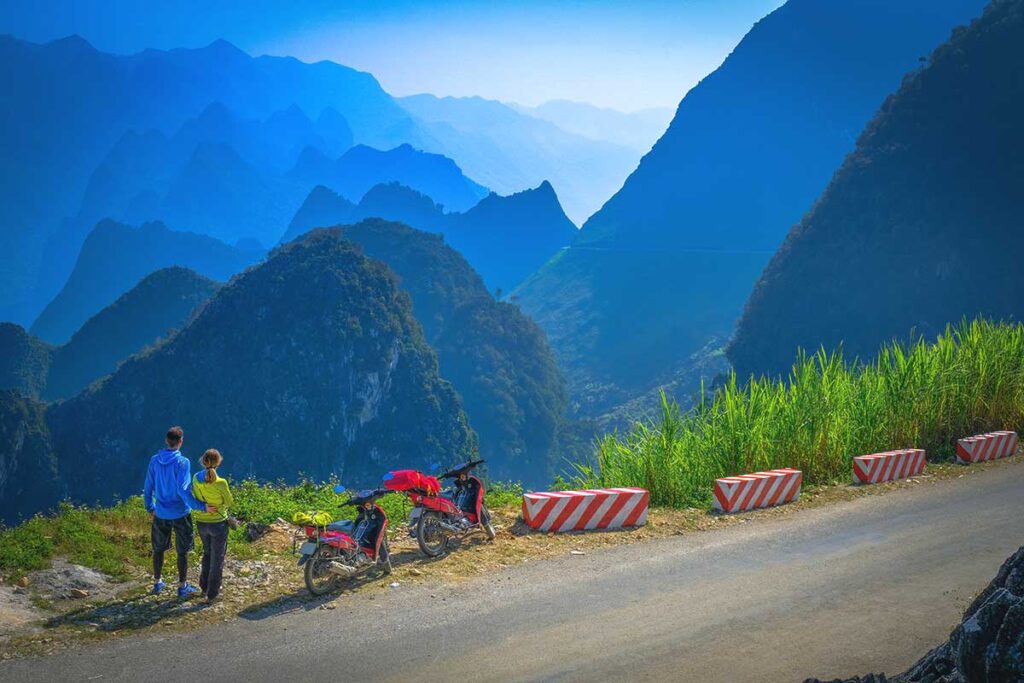
If you’re an experienced rider, you’ll likely have no problems. The main roads along the loop are generally in good condition, with steep sections protected by guardrails. Traffic is light, and the ride can be a lot of fun. Some off-the-beaten-path roads are unpaved or narrow, but as long as the weather is dry and you ride carefully, they’re manageable too.
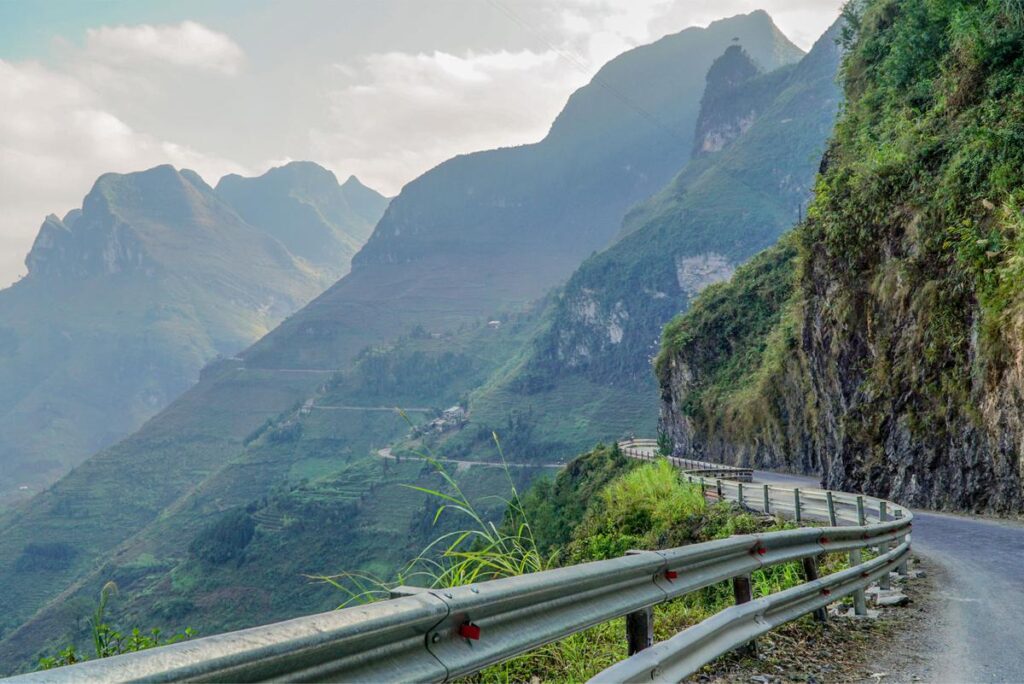
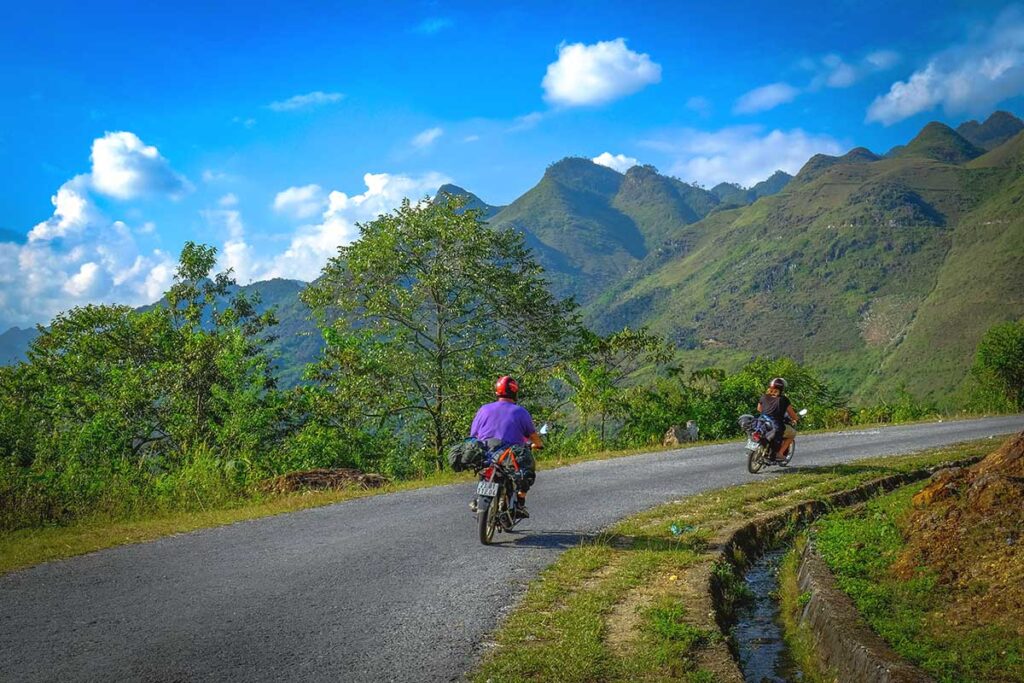
Still, even experienced riders should watch out for surprise potholes, loose gravel, sudden curves, and the occasional buffalo blocking the road.
If you lack experience, it’s a different story. Mountain roads require real skill—steep slopes, sharp turns, and occasional rain can make things tricky. Just because many backpackers do it doesn’t mean it’s easy or risk-free. If you’ve never driven a motorbike or have limited practice, the Ha Giang Loop is not the best place to learn.
Bottom line: if you’re unsure or don’t feel fully in control on a motorbike, strongly consider going with an Easy Rider instead.
By yourself or join a tour?
When doing the Ha Giang Loop by motorbike, you have two main options: ride completely on your own or join a group tour—even if you want to drive yourself.
Driving with a Group Tour
Many self-driving travelers still choose to join a group tour. In fact, it’s the most common option. You drive your own motorbike, but follow a local guide who sets a safe, steady pace and knows the route inside out. The guide helps with navigation, points out hazards, and makes sure you don’t miss important turns or highlights. It’s also much more social, which makes the trip more fun for many people.
Group tours often include a mix of self-drivers and Easy Rider passengers. The downside? Less flexibility. You can’t always stop when you want, and sometimes you have to wait for others. But the safety and support often outweigh the downsides—especially for people without much experience or without a valid licence.
Another benefit: group guides usually know where police checkpoints are and can help you avoid issues if you’re not driving fully legal. While not foolproof, it helps reduce both safety and legal risks.
By yourself
Going “by yourself” means riding the loop independently—without a guide or group. You can still meet others on the road or stay in social hostels, but the journey and planning are all in your hands.
This option is best suited for travelers with a valid motorbike licence and solid experience. Navigation is manageable, and if you ride with care, the loop is safe. For many, this is the ultimate motorbike adventure—but it’s not recommended for beginners.
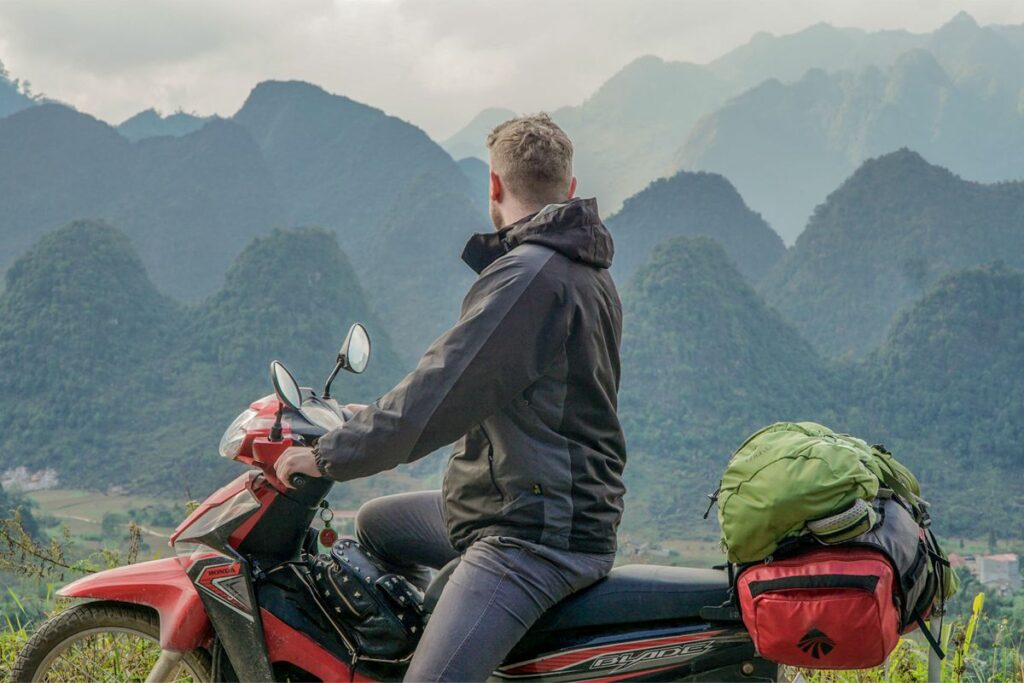
How to do the Ha Giang Loop by motorbike?
To do the Ha Giang Loop by motorbike, you’ll need to get to Ha Giang City, rent a motorbike, and decide on your itinerary. If you’re joining a group tour, the good news is that these steps are already taken care of—transfers, motorbike rental, itinerary, and accommodation are all included.
Let us arrange your full Ha Giang Loop tour
Prefer everything organized? Our Ha Giang tours include motorbike rental, Hanoi transfers, guides, accommodation, and a planned route—whether self-driving or on the back with Easy Rider. See all options and start your adventure.
Step 1: Get to Ha Giang City
Ha Giang City is the official start and end point of the loop. There’s no airport or train station, so the only way to reach it is by road.
Riding a motorbike from Hanoi
You can ride a motorbike from Hanoi, but it’s not recommended unless Ha Giang is part of a longer road trip (for example, continuing to Cao Bang or Sapa). Otherwise, it adds a long stretch of highway that’s not very scenic. Most people travel to Ha Giang by bus and start the loop from there.
Limousine bus (Daytime)
Limousine vans run daily between Hanoi and Ha Giang, offering comfort and direct hotel pickup/drop-off. It’s a great option if you prefer to travel during daylight and enjoy the scenery.
Sleeper bus (Nighttime)
The sleeper bus is popular for saving a night of accommodation and maximizing time on the loop. However, not everyone finds it comfortable or safe—especially on mountain roads at night.
We’ve written a full guide on how to get from Hanoi to Ha Giang, including which buses to take and where to book tickets.
Step 2: Rent a motorbike
There are plenty of places to rent a motorbike in Ha Giang. Most don’t check licences, especially hostels and homestays. That said, a few reputable rental shops do ask for a valid licence or even offer small insurance coverage—though this is rare.
You’ll find both manual and semi-automatic bikes available. Make sure to check the brakes, tires, and lights before you leave. Many places also provide a rain cover and luggage strap.
For more tips and rental shop recommendations, see our Ha Giang motorbike rental guide.
Step 3: Decide your itinerary
Plan your route based on how far you want to ride each day. On mountain roads, even 100 km can take over three hours—especially with photo stops, food breaks, or detours.
Some popular sights require short hikes or side trips, so factor in extra time. There are only a few towns with restaurants, so plan your lunch and fuel stops ahead.
Many travelers choose the classic 3-day loop, while others extend to 4 or 5 days to explore further or take it slower.
Choosing the right motorbike for Ha Giang
When doing the Ha Giang Loop by motorbike, picking the right type of bike can make a big difference to your comfort and safety—especially in the mountains.
Semi-automatic bikes (like the Honda Wave or similar 110–125cc models) are the most recommended for the loop. They’re simple to use (no clutch), but still give you enough control on the steep mountain roads. This is the ideal choice for most travelers—even beginners with a bit of confidence.
Manual bikes (with clutch, usually 125–150cc) give you the most control, especially on descents and sharp corners. But they do require prior experience. If you’re not used to riding manual, Ha Giang is not the place to learn.
Fully automatic scooters are not advised. They lack engine braking, meaning it’s harder to slow down safely on long downhill sections. They’re fine for city use, but not made for mountain terrain.
Engine sizes typically range from 110cc to 150cc. Make sure the bike is in good condition—check brakes, tires, lights, and horn. A reliable bike is more important than a powerful one.
Not sure where to rent? Check our motorbike rental guide for Ha Giang for shop recommendations and what to look out for.
Tips for driving the Ha Giang Loop by motorbike
With the right mindset and preparation, riding the Ha Giang Loop by motorbike can be an unforgettable experience. These tips help you stay safe, comfortable, and make the most of the journey.
Ride defensively and stay in control
The roads may seem quiet, but always expect the unexpected—sharp turns, potholes, loose gravel, or a buffalo around the bend. Ride at a speed where you can brake safely at any moment. On mountain roads, it’s better to go slow than regret it.
Wear proper clothing
A helmet is mandatory and usually included in rentals. Long sleeves and trousers are recommended—for both sun protection and safety. Temperatures in the mountains can drop quickly, so bring a light jacket or windbreaker. Closed shoes (not flip-flops) are a smart choice.
Carry a daypack with essentials
Keep a small backpack with you on the bike for things you’ll want quick access to: water, sunglasses, phone, sunscreen, camera, and some cash. Your main luggage will be tied down, so don’t rely on it for things you’ll need during the ride.
Manage your luggage wisely
Most bikes have a luggage rack behind the seat that can handle a backpack or small suitcase. These are strapped down securely and covered with a rain cover. If you’re carrying something larger, consider leaving it behind in Ha Giang or even Hanoi—many hostels and hotels offer safe storage if you return after the trip.
Don’t drive after dark
The Ha Giang Loop is beautiful by day, but dangerous at night. There’s minimal lighting, increased risk of potholes or animals on the road, and fewer people around if something goes wrong. Always plan to reach your accommodation before sunset.
Fuel up often—even if the tank isn’t empty
Petrol stations are sparse, especially on remote stretches. Whenever you see one, top off your tank. Don’t assume the next town will have a working station. Locals sometimes sell petrol in bottles, but avoid relying on that unless necessary.
Brake with care on mountain descents
On steep downhills, use engine braking by staying in lower gears. This is safer than relying only on your brakes, which can overheat. If you’re riding automatic, be extra cautious—this is one reason they’re not ideal for mountain roads.
Watch for road hazards beyond traffic
Besides trucks or buses, you’ll often share the road with cows, buffalo, dogs, and kids on bicycles. Landslides and loose gravel can appear after rain. Stay alert and assume every blind turn hides something unexpected.
Get a Vietnamese SIM card for navigation and updates
Having mobile data makes a big difference when riding the loop—you can check road conditions, reroute if needed, and call for help. A local SIM card with 4G coverage is cheap and easy to get in Hanoi before your trip.
Download offline maps before you go
Even with a SIM card, signal can be weak or lost entirely in mountain areas. Use apps like Google Maps or Maps.me to download the full Ha Giang region for offline use. This is essential for self-drivers.
Bring enough cash for the full loop
Most places on the loop don’t accept cards, including homestays, small restaurants, and fuel stops. ATMs are limited—especially once you leave Ha Giang City—so withdraw enough VND in advance to cover food, fuel, and accommodation.
